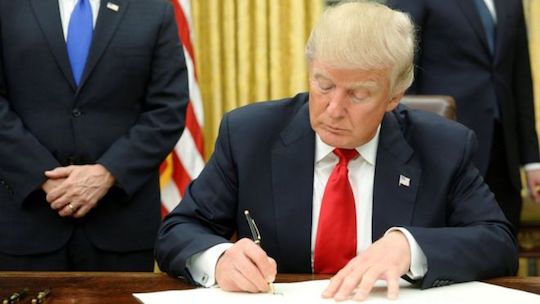On Friday, Donald Trump issued an executive order that blocks refugees from entering the United States for the next 120 days, refuses refugees from Syria indefinitely, and bars visitors of any kind from Iran, Iraq, Libya, Somalia, Sudan, Syria and Yemen. The Department of Homeland Security initially said the travel ban would apply even to legal permanent residents—so-called “green card” holders—from those countries, but it has since announced exceptions on a case-by-case basis. Maybe that had something to do with the lawsuits. The New York Times reports that multiple federal courts have enjoined customs and immigration officials from enforcing the ban, but they seem to be doing it anyway—paving the way for a constitutional crisis between the executive and judicial branches. It’s almost as if Trump and his team didn’t fully grasp the process by which such policies are made. Or maybe they just don’t like it. Another Times report on how the travel ban came about gives us this amazing anecdote:
Gen. John F. Kelly, the secretary of homeland security, had dialed in from a Coast Guard plane as he headed back to Washington from Miami. Along with other top officials, he needed guidance from the White House, which had not asked his department for a legal review of the order.
Halfway into the briefing, someone on the call looked up at a television in his office. “The president is signing the executive order that we’re discussing,” the official said, stunned.
The president signed a border security order on TV before he talked it through with the head of the DHS. It’s every barstool pundit’s fantasy of personal power come to life. It also might be a threat to democracy.

